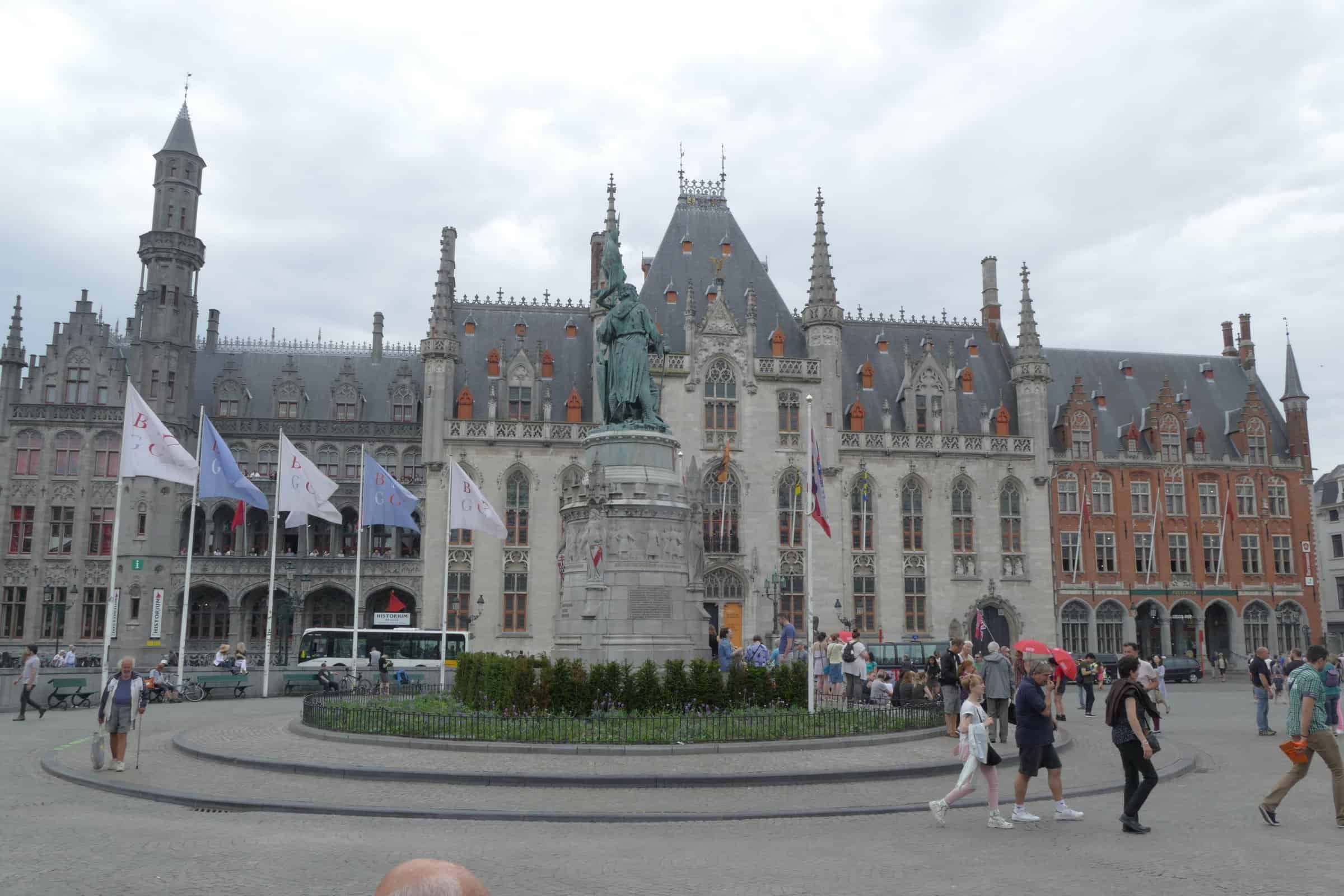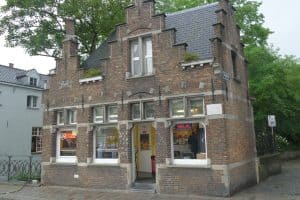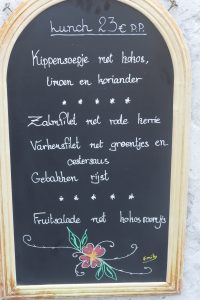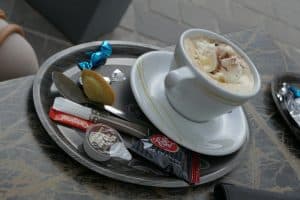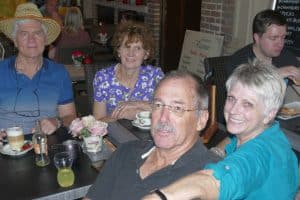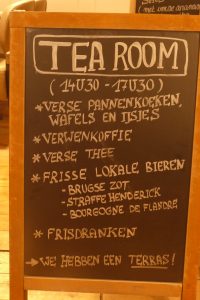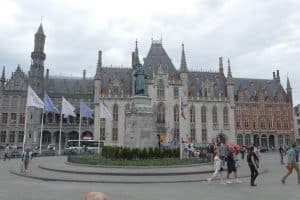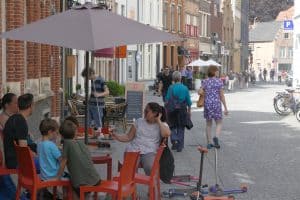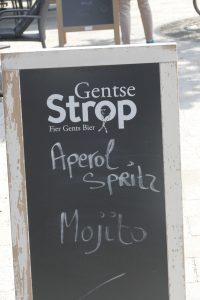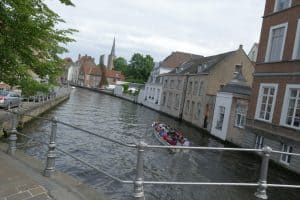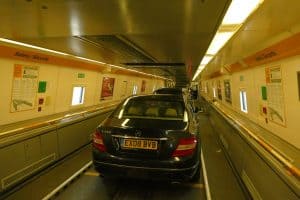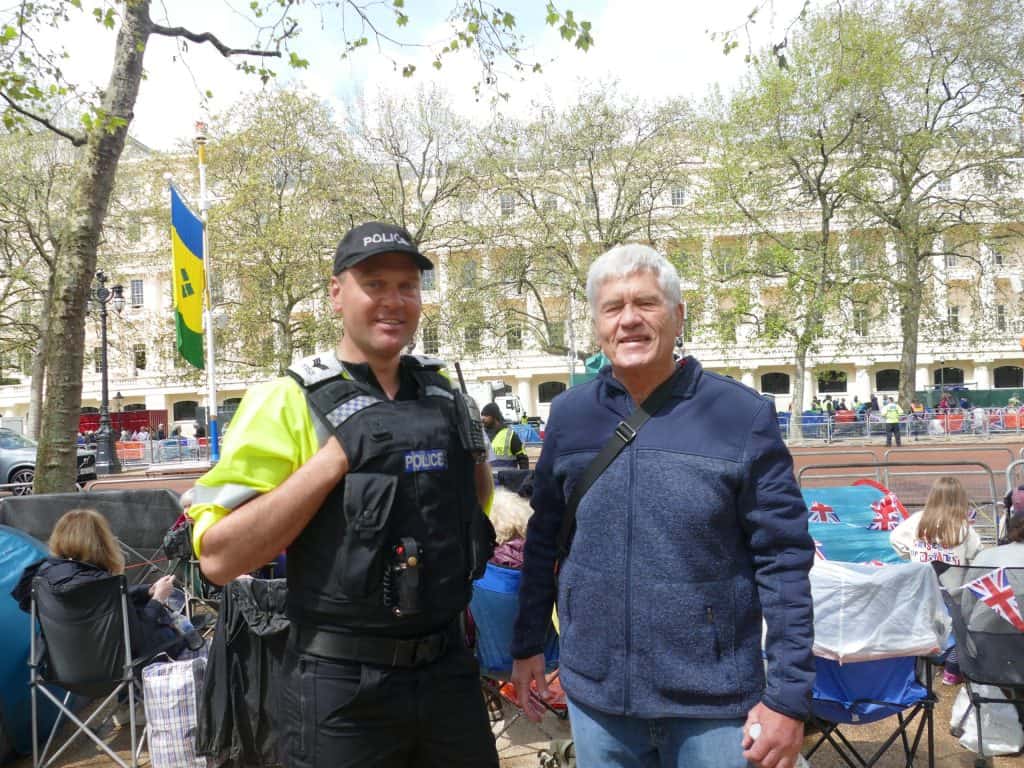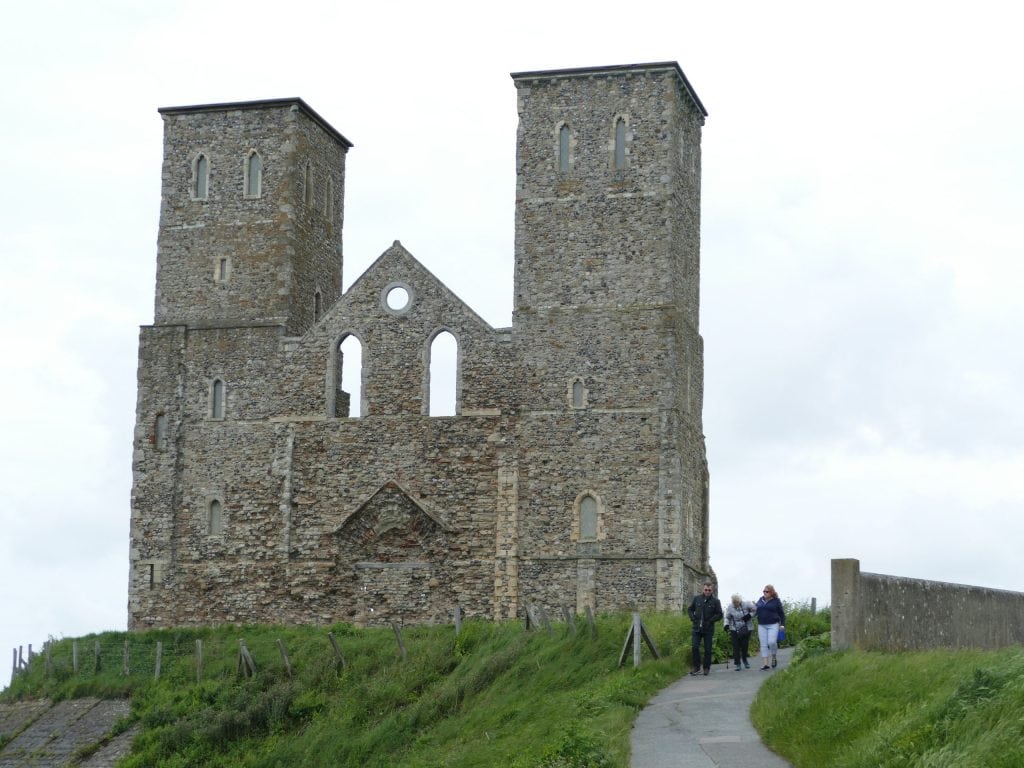During June, when days in the Northern Hemisphere are long and the weather good – well, most of the time – one itches to drive around and visit other places. Living in Kent, it is easy for us to quickly visit Bruges for the day. We can drive through the Channel Tunnel or take the Eurostar from Ebbsfleet International. Our good friends from Potchefstroom, Piet and Julita Erwee, have recently visited us and we felt like taking a trip to Europe. Piet and I studied together, and they once lived in Bicester near Oxford, where one of the most famous and favourite radio broadcasters in the UK was one of Piet’s patients. We departed early, drove through the tunnel, and just an hour or so after we arrived in Calais we reached the outskirts of Bruges. On our way there we have already recognised and enjoyed the colourful Flemish place names in the northern parts of France. We especially enjoyed Duinekerken, better known as Dunkirk, or Dunkerque in French, and Diksmuide, which is a compilation of the words ‘dyke’ and ‘riviermonding’ (‘mouth of a river’).
When we arrived in Bruges, our priority was a peaceful cup of coffee outside under a colourful umbrella where we could sit and watch the people passing by. It is much more tranquil and quiet where only pedestrians are allowed.
Then we walked to the beautiful city square, which is a World Heritage Site, and took note of all the Flemish names and expressions, such as ‘Gentse Strop’ and ‘Straffe Hendrik’, which apparently means ‘strong Hendrik’ and refers to beer. We decided to do the city tour, and the tour guide discussed the history of Bruges in detail. The town was established in the ninth century by the Vikings, and the name was derived from the old Scandinavian word ‘Brygga,’ which means ‘port’ or ‘berthing’. The historic heart of the city is a World Heritage Site. Bruges, also known as the Venice of the North, was always a prosperous region because of the textile industry. Most of the wool came from England. The skill of Bruges’s weavers was unmatched, and the quality of Flemish textiles became legendary. In 1302, the increasing wealth led to a clash between the government and skilled professionals who refused to pay increased taxes. Early in the morning the rebels, under the leadership of the Dean of the Weavers’ Guild and the Dean of the Butchers’ Guild, sneaked into the village and killed everyone who could not properly pronounce the Flemish expression ‘schild en vriend’ (‘shield and friend’).
The 14th century was exceptionally busy for Bruges, which was at the time part of a thriving association of trading cities in Northern Europe, and Venice, Florence and Genoa built trade houses there.
After our city tour, Piet and I visited the Torture Museum, which is known as Foltermuseum De Oude Steen. It might not have been a good idea just before lunch! It is housed in the oldest stone building in Bruges, and the more than one hundred torture and execution instruments made us think deeply about how terribly cruel people have been for centuries and how much effort has been made to come up with new and even crueler torture methods. The one stuck in my head is a cage with rats tied to the victim’s chest. The starved rats had to eat through the victim’s rib cage to get out.
After this ‘light’ entertainment, we had lunch in one of the many small, busy streets. A thunderstorm hit the city, and we were still sitting outside when it suddenly began to shower. The afternoon when we left for home, the temperature was still 28 °C. It was a lovely day far from our usual routine.



